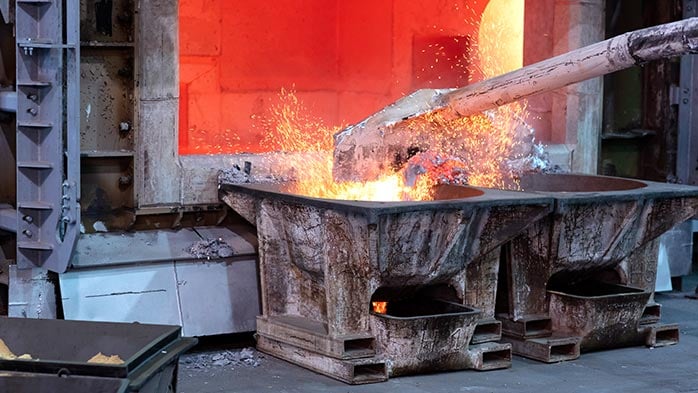Over the last three years, the weather phenomenon known as La Niña came about, bringing intense climate variations that impacted the whole steel value chain. Late this past winter, La Niña came to an end, yet the period of neutrality in the Pacific Ocean was brief as evidence of a new El Niño is now increasing. If El Niño does come about, it will impact the steel supply chain in many different ways.
El Niño and its characteristics
El Niño and La Niña are opposite phases of the El Niño-Southern Oscillation (ENSO) cycle, with La Niña sometimes referred to as the cold phase of ENSO and El Niño as the warm phase.
During El Niño years, the trade winds weaken, and the central and eastern tropical Pacific warms up. This change in ocean temperature results in a shift in cloudiness and rainfall from the western to the central tropical Pacific Ocean.
The impacts are different in each region of the globe. During El Niño, Europe and the USA have above-average summer temperatures, East China with more rain, increased rainfall in the south, southeast and central-west regions of Brazil while Australia and Indonesia face droughts.
A phase prior to the formation of El Niño could be the Coastal El Niño. It is characterised by higher temperatures near the coast of Peru and Ecuador. This previous phase is not always registered, the direct formation of the classic El Niño is more common. However, this year we were experiencing this event for the first time since 2017. Such an anomaly has caused heavy rains in those two countries, in addition to some impact on Chile.
World record temperatures could be achieved
The world may break new records for average temperatures in 2023 and 2024 with the arrival of El Niño. In 2016, the last year of a strong event, the world recorded the highest temperatures so far, a combination of the climate phenomenon and climate change. 2023 looks particularly worrying, and we could see the world grapple with record-high temperatures, possibly surpassing the Paris Agreement’s 1.5°C warming milestone.
Experts are also concerned about the changes taking place in the Ocean, as the waters of the Eastern Pacific already register higher temperatures even before the start of the event has been confirmed. In May, the average global sea surface temperature was about 0.1° C (0.2° F) higher than any other on record.
How does El Niño affect the world?
As commented on at the beginning, the phenomenon has different impacts in each region and, consequently, affects the steel supply chain in different ways as well.
Australia has suffered in the last three years from the heavy rains caused by La Niña, mainly impacting coal production and exports (blue bars). El Niño, on the other hand, causes drier conditions in the east of the country, favouring the production and export of the commodity (red bars). On the demand side, northern China, India and Japan could suffer from more severe droughts. As the peak of the event is expected for autumn/winter in the region, this may boost the heating demand and the need for coal-fired generation, as the lack of rain could mean reduced hydropower availability. This would be a positive combination for coal producers.
In Western Australia, the opposite effect can happen, the region would face higher risks of cyclones, which can have some impacts on iron ore production and shipments. At the same time, southern China is heavily affected by rainfall, which can cause major flooding. This would have a direct impact on the consumption of finished steel, mainly in the construction and infrastructure sectors. Excessive rainfall in this region of China also means less coal consumption, as more water is available, implying more hydropower generation.
Another region that suffers from droughts is Indonesia. The country is the world's largest producer of nickel, and mining equipment mostly depends on hydroelectric power, so less rain implies a direct impact on mining output. Nickel is widely used in steel enrichment, with the characteristic of strengthening it, affecting producers of special alloy steels.
The north of Brazil also suffered a lot from rainfall in the last three years, with performances far below expectations in the production of iron ore. Vale's S11D mine has been performing very poorly in recent years, and much of this has been attributed to the rainfall. On the other hand, the mines in the Southeast region of the country, had very interesting quarters in the same period, but now, with El Niño, the positions may be reversed, since the possibility of more intense rains migrates from the north to the south of the country. However, the north will continue to face other key constraints.
Impacts are expected, but to a lesser degree
Intense climate changes always cause unexpected disruptions. However, after three consecutive years of La Nina, the effects of an El Niño should be milder, at least for the steel value chain. As explained above, the impacts on met coal production in Australia are practically nil, on the contrary, it is favoured. While in iron ore production they can happen, but this is not confirmed in every El Niño event. On the demand side, the damage should not be so great since the rains do not significantly affect the main steel consumer markets. However, the moment could not be more unfortunate, since in addition to the last climatic events, the world is still facing macroeconomic difficulties arising from the challenges imposed by Covid-19.
If there's one thing we've learned from all the recent developments, it's that the prices of these raw materials can be very volatile and reach historic levels never seen before. Particularly now, with the market still recovering, this can bring difficulties and challenges for all parts of the supply chain.

















